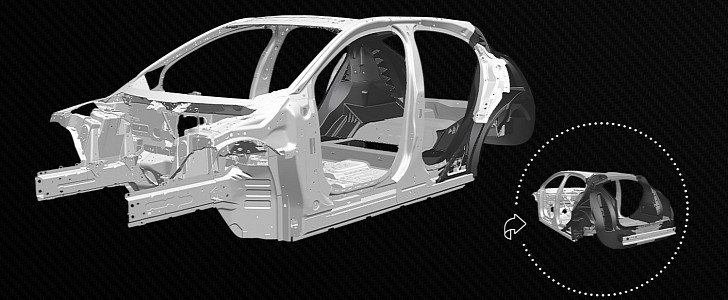The British automaker certainly loves its advanced structures; just remember the D7 platform - a.k.a. the Premium Lightweight Architecture (PLA) - and its high vehicle count benefitting from its aluminum-intensive build. There’s virtually something for everyone in there, from the (in)famous L663 Defender down to the compact Jaguar XE.
Now, Jaguar Land Rover has announced a “groundbreaking” advanced composite materials project that could make the UK a “global leader in low-carbon technology.”
We’re not so sure about that part since just about every developed country is racing towards lower emissions, but we have big hopes that JLR will at least succeed in making its future electric vehicles even more energy efficient.
For its part, the Tata Motors-owned British manufacturer has joined UK’s “Tucana” consortium (it’s a four-year project) in a bid to research the possible use of advanced lightweight composite materials (such as carbon fiber, but not exclusively) for its upcoming electric cars.
If successful, it should help the company come up with EVs that “deliver increased range, greater performance and a more dynamic drive.” As far as the Tucana project is concerned, its stated goal is to push electric vehicles into mainstream so the goals do blend nicely.
Basically, Jaguar Land Rover hopes to develop even lighter vehicles and powertrains that will become the next evolutionary step as the company investigates replacing aluminum and steel structures with composite ones.
In case we’re reading the JLR press release correctly, noting the latter should be able to handle “the increased torque generated by high-performance batteries” might even be considered as a bit of a teaser for upcoming sporty things packing zero-emissions powertrains.
Of course, the main idea is to make future electrics lighter in a bid to compensate for the weight of the battery packs, thus increasing efficiency and lowering the CO2 emissions. Just to put things into perspective, JLR has a few tangible targets: raise vehicle stiffness by 30% and lower the weight by (just) 35 kg (77 pounds).
They also want to achieve a higher overall safety by strategically making use of tailored composites, such as carbon fiber. While the goals might seem a bit understated, JLR isn’t into futuristic research; instead, it aims to have a prototype fleet of Tucana vehicles ready to roll by the coming year.
We’re not so sure about that part since just about every developed country is racing towards lower emissions, but we have big hopes that JLR will at least succeed in making its future electric vehicles even more energy efficient.
For its part, the Tata Motors-owned British manufacturer has joined UK’s “Tucana” consortium (it’s a four-year project) in a bid to research the possible use of advanced lightweight composite materials (such as carbon fiber, but not exclusively) for its upcoming electric cars.
If successful, it should help the company come up with EVs that “deliver increased range, greater performance and a more dynamic drive.” As far as the Tucana project is concerned, its stated goal is to push electric vehicles into mainstream so the goals do blend nicely.
Basically, Jaguar Land Rover hopes to develop even lighter vehicles and powertrains that will become the next evolutionary step as the company investigates replacing aluminum and steel structures with composite ones.
In case we’re reading the JLR press release correctly, noting the latter should be able to handle “the increased torque generated by high-performance batteries” might even be considered as a bit of a teaser for upcoming sporty things packing zero-emissions powertrains.
Of course, the main idea is to make future electrics lighter in a bid to compensate for the weight of the battery packs, thus increasing efficiency and lowering the CO2 emissions. Just to put things into perspective, JLR has a few tangible targets: raise vehicle stiffness by 30% and lower the weight by (just) 35 kg (77 pounds).
They also want to achieve a higher overall safety by strategically making use of tailored composites, such as carbon fiber. While the goals might seem a bit understated, JLR isn’t into futuristic research; instead, it aims to have a prototype fleet of Tucana vehicles ready to roll by the coming year.




